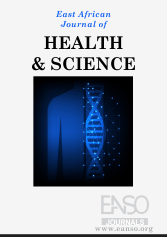Effect of Mass Media Exposure on HIV/AIDS Stigma Among Kenyan Women and Men
Résumé
In Kenya, stigma directly or indirectly continues to play a major role in spreading HIV/AIDS. Negative attitudes, perceptions, and discrimination toward people who are HIV positive or have AIDS can adversely affect their willingness to be tested and adhere to antiretroviral therapy. This study examined the effect of mass media exposure on HIV/AIDS stigma among men and women in Kenya. It uses retrospective cross-sectional data from the Kenya Demographic and Health Survey (KDHS) 2008/09, adjusting for weights and strata to account for its complex design. The study sample comprised women aged 15-49 (n = 3,811) and men aged 15-54 (n = 3,095) who agreed to voluntary counselling and testing for HIV. Among them, 8.34% of the women and 4.98% of the men tested positive for HIV. Women who consumed all forms of media (newspapers, magazines, radio, and television) represented 23.05% of the sample, while those who consumed none comprised 6.89% (F[2.77, 1053.35] = 24.3; p < 0.001); the results for men were 22.06% vs 1.31% (F[2.89, 1098.72]) = 17.84; p < 0.001). Women and men who consumed all media almost every day were 11% (AOR = 0.89; p < 0.05) and 25% (AOR = 0.75; p < 0.01), respectively, less likely to impute HIV/AIDS stigma than those who never consumed all forms of media. Those who consumed all media forms less than once a week were 48% (AOR = 0.52; p < 0.05), and those who consumed them almost every day were 21% (AOR = 0.79), p < 0.001) less likely to impute an HIV/AIDS stigma compared to those who never consumed any media sources. All media consumption, particularly reading newspapers/magazines, reduced HIV/AIDS stigma. The study concluded that all forms of media should build on and scale up such efforts to reduce the HIV/AIDS stigma that impedes Kenyans from protecting their health.
##plugins.generic.usageStats.downloads##
Références
Aghaei, A., Sakhaei, A., Khalilimeybodi, A., Qiao, S., & Li, X. (2023). Impact of mass media on HIV/AIDS stigma reduction: A systematic review and meta‑analysis. AIDS and Behavior, 1-16. https://doi.org/10.1007/s10461-023-04057-5
Appiah, F., Fenteng, J. O. D., Darteh, A. O., Dare, F., Saah, J. A., Takyi, M., Ayerakwah, P. A., Boakye, K., & Ameyaw, E. K. (2022). Association between mass media exposure and endorsement of HIV‑infected female teachers’ teaching: Insight from 2014 Ghana Demographic and Health Survey. BMC Women’s Health, 22(1), 121. https://doi.org/10.1186/s12905-022-01705-1
Asamoah, C. K., Asamoah, B. O., & Agardh, A. (2017). A generation at risk: A cross-sectional study on HIV/AIDS knowledge, exposure to mass media, and stigmatising behaviors among young women aged 15–24 years in Ghana. Global Health Action, 10(1), 1331538. https://doi.org/10.1080/16549716.2017.1331538
Babalola, S., Fatusi, A., & Anyanti, J. (2009). Media saturation, communication exposure and HIV stigma in Nigeria. Social Science & Medicine, 68(8), 1513–1520. https://doi.org/10.1016/j.socscimed.2009.01.026
Bago, J-L., & Lompo, M. L. (2019). Exploring the linkage between exposure to mass media and HIV awareness among adolescents in Uganda. Sexual & Reproductive Healthcare, 21, 1–8. https://doi.org/10.1016/j.srhc.2019.04.004
Bekalu, M. A., & Eggermont, S. (2015). Socioeconomic and socioecological determinants of AIDS stigma and the mediating role of AIDS knowledge and media use. Journal of Communication in Healthcare, 8(4), 316-324. https://doi.org/10.1179/1753807615Y.0000000019
Bekalu, M. A., Eggermont, S., Ramanadhan, S., & Viswanath, K. (2014). Effect of media use on HIV-related stigma in Sub-Saharan Africa: A cross-sectional study. PloS One, 9(6), e100467. https://doi.org/10.1371/journal.pone.0100467
Boah, M., Yeboah, D., Kpordoxah, M. R., & Adokiya, M. Y. (2022). Frequency of exposure to the media is associated with levels of HIV-related knowledge and stigmatising attitudes among adults in Ghana. African Journal of AIDS Research, 21(1), 49–57. https://doi.org/10.2989/16085906.2022.2040549
Cort, D. A., Reynolds, K., & Chakraborty, D. (2023). HIV stigma beliefs and unprotected sex among teenagers and young adults in sub-Saharan Africa: The moderating role of mass media exposure. Social Science & Medicine, 317, 115615. https://doi.org/10.1016/j.socscimed.2022.115615
Creel, A. H., Rimal, R. N., Mkandawire, G., Böse, K., & Brown, J. W. (2011). Effects of a mass media intervention on HIV-related stigma: ‘Radio Diaries’ program in Malawi. Health Education Research, 26(3), 456–465. https://doi.org/10.1093/her/cyr012
Frishkopf, M., Zakus, D., Hamze, H., Alhassan, M., Zukpeni, I. A., & Abu, S. (2016). Traditional music as a sustainable social technology for community health promotion in Africa: “Singing and dancing for health” in rural Northern Ghana. Legon Journal of the Humanities, 27(2), 47-72. https://dx.doi.org/10.4314/ljh.v27i2.4
George, L. S. (2019). HIV related stigma and discrimination among people living with HIV/AIDS in Ernakulam District: A qualitative study. Indian Journal of Community Medicine, 44(Suppl 1), S34-S37. https://doi.org/10.4103/ijcm.IJCM_30_19
Grabbe, K. L., Menzies, N., Taegtmeyer, M., Emukule, G., Angala, P., Mwega, I., & Marum, E. (2010). Increasing access to HIV counseling and testing through mobile services in Kenya: Strategies, utilisation, and cost-effectiveness. Journal of Acquired Immune Deficiency Syndromes, 54(3), 317-323. https://doi.org/10.1097/QAI.0b013e3181ced126
Gurmu, E., & Etana, D. (2015). HIV/AIDS knowledge and stigma among women of reproductive age in Ethiopia. African Journal of AIDS Research, 14(3), 191–199. https://doi.org/10.2989/16085906.2015.1051066
Haroun, D., El Saleh, O., Wood, L., Mechli, R., Al Marzouqi, N., & Anouti, S. (2016). Assessing knowledge of, and attitudes to, HIV/AIDS among university students in the United Arab Emirates. PLoS One, 11(2), e0149920. https://doi.org/10.1371/journal.pone.0149920
He, A., Liu, H., & Tian, Y. (2022). Reducing HIV public stigma through news information engagement on social media: A multi-method study of the role of state empathy. Cyberpsychology: Journal of Psychosocial Research on Cyberspace, 16(5), Article 5. https://doi.org/10.5817/CP2022-5-5
Hutchinson, P. L., Mahlalela, X., & Yukich, J. (2007). Mass media, stigma, and disclosure of HIV test results: Multilevel analysis in the Eastern Cape, South Africa. AIDS Education and Prevention, 19(6), 489-510. http://dx.doi.org/10.1136/sti.79.6.442
Jesmin, S. S., Chaudhuri, S., & Abdullah, S. (2013). Educating women for HIV prevention: Does exposure to mass media make them more knowledgeable? Health Care for Women International, 34(3–4),303–331. https://doi.org/10.1080/07399332.2012.736571
Kalichman, S. C., & Simbayi, L. C. (2003). HIV testing attitudes, AIDS stigma, and voluntary HIV counselling and testing in a black township in Cape Town, South Africa. Sexually Transmitted Infections, 79(6), 442-447. https://doi.org/10.1136/sti.79.6.442
Letshwenyo-Maruatona, S. B., Madisa, M., Boitshwarelo, T., George-Kefilwe, B., Kingori, C., Ice, G., Bianco, J. A., Marape, M., & Haile, Z. T. (2019). Association between HIV/AIDS knowledge and stigma towards people living with HIV/AIDS in Botswana. African Journal of AIDS Research, 18(1), 58–64. https://doi.org/10.2989/16085906.2018.1552879
Levy, B., Correia, H. E., Chirove, F., Ronoh, M., Abebe, A., Kgosimore, M., Chimbola, O., Machingauta, M. H., Lenhart, S., & White, K. A. J. (2021). Modeling the effect of HIV/AIDS stigma on HIV infection dynamics in Kenya. Bulletin of Mathematical Biology, 83(5), 55. https://doi.org/10.1007/s11538-021-00891-7
Li, L., Rotheram-Borus, M. J., Lu, Y., Wu, Z., Lin, C., & Guan, J. (2009). Mass media and HIV/AIDS in China. Journal of Health Communication, 14(5), 424–438. https://doi.org/10.1080/10810730903032994
Liskin, L. (1990). Using mass media for HIV/AIDS prevention. AIDS Care, 2(4), 419-420. https://doi.org/10.1080/09540129008257766
Marum, E., Morgan, G., Hightower, A., Ngare, C., & Taegtmeyer, M. (2008). Using mass media campaigns to promote voluntary counseling and HIV-testing services in Kenya. AIDS, 22(15), 2019-2024. https://doi.org/10.1097/QAD.0b013e3283104066
Mugoya, G. C. T., & Ernst, K. (2014). Gender differences in HIV-related stigma in Kenya. AIDS Care, 26(2), 206-213. https://doi.org/10.1080/09540121.2013.808733
Mwarogo, P. (2007). Impact project experience and lessons learned: From behavior change communication to strategic behavioral communication on HIV in Kenya, 1999-2006. Family Health International (FHI). https://pdf.usaid.gov/pdf_docs/PDACJ728.pdf
Noar, S. M., Palmgreen, P., Chabot, M., Dobransky, N., & Zimmerman, R. S. (2009). A 10-year systematic review of HIV/AIDS mass communication campaigns: Have we made progress? Journal of Health Communication, 14(1), 15-42. https://doi.org/10.1080/10810730802592239
Nyaga, R. (2020). The HIV/AIDS pandemic in Kenya: An investigation into the perceptions of Kenyans toward people living with HIV/AIDS and government programmes. African Journal of AIDS Research, 19(2), 117–122. https://doi.org/10.2989/16085906.2020.1758172
Odimegwu, C., Adedini, S. A., & Ononokpono, D. O. (2013). HIV/AIDS stigma and utilisation of voluntary counselling and testing in Nigeria. BMC Public Health, 13, 465. https://doi.org/10.1186/1471-2458-13-465
Onsomu, E. O., Moore, D., Abuya, B. A., Valentine, P., & Duren-Winfield, V. (2013). Importance of the media in scaling-up HIV testing in Kenya. SAGE Open, 3(3). https://doi.org/10.1177/2158244013497721
Panford, S., Nyaney, M. O., Amoah, S. O., & Aidoo, N. G. (2001). Using folk media in HIV/AIDS prevention in rural Ghana. American Journal of Public Health, 91(10), 1559-1562. https://doi.org/10.2105/ajph.91.10.1559
Ren, C., Hust, S. J. T., & Zhang, P. (2010). Stigmatising HIV-AIDS in the 21st Century? Newspaper Coverage of HIV-AIDS in China. China Media Report Overseas, 6(4), 3+. https://link.gale.com/apps/doc/A242509926/AONE?u=anon~4af1dda9&sid=googleScholar&xid=021545fe
StataCorp. (2021). Stata statistical software: Release 17. StataCorp LLC.
Torres-Reyna, O. (n.d.). Getting started in factor analysis (using Stata). https://www.princeton.edu/~otorres/Stata/Factor
Tran, B. X., Than, P. Q. T., Tran, T.T., Nguyen, C. T., & Latkin, C. A. (2019). Changing sources of stigma against patients with HIV/AIDS in the rapid expansion of antiretroviral treatment services in Vietnam. BioMed Research International, 2019, 4208638. https://doi.org/10.1155/2019/4208638
Turan, B., Hatcher, A. M., Weiser, S. D., Johnson, M. O., Rice, W. S., & Turan, J. M. (2017). Framing mechanisms linking HIV-related stigma, adherence to treatment, and health outcomes. American Journal of Public Health, 107(6), 863-869. https://doi.org/10.2105/AJPH.2017.303744
University of California, Los Angeles [UCLA]. (2021). Factor Analysis: Stata annotated output. https://stats.oarc.ucla.edu/stata/output/factor-analysis/
Vidanapathirana, J., Abramson, M. J., Forbes, A., & Fairley, C. (2005). Mass media interventions for promoting HIV testing. Cochrane Database Systematic Review, 20(3), CD004775. https://doi.org/10.1002/14651858.CD004775.pub2
WHO (2022). The global health observatory: Explore a world of health data. https://www.who.int/data/gho/data/themes/hiv-aids
Copyright (c) 2023 Elijah O. Onsomu, PhD, DaKysha Moore, PhD, James K. Kimani, PhD, Benta A. Abuya, PhD

Ce travail est disponible sous la licence Creative Commons Attribution 4.0 International .




























